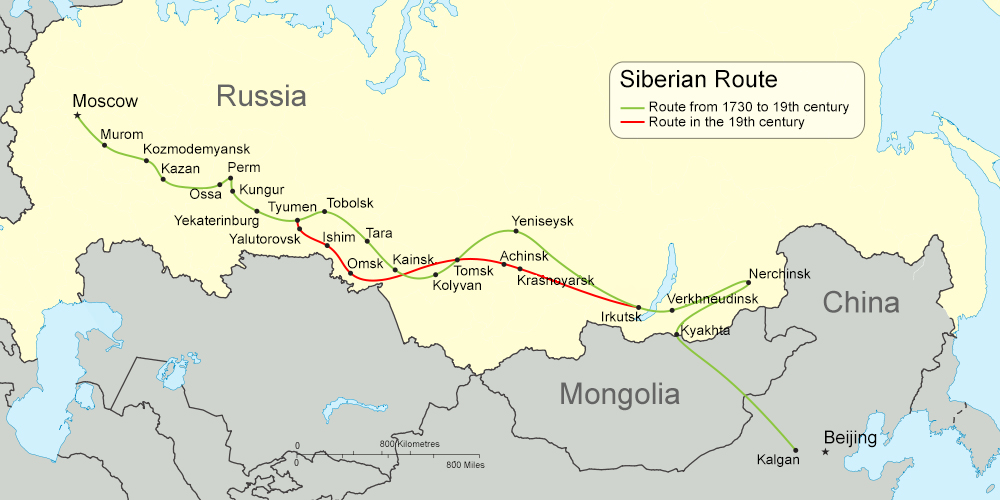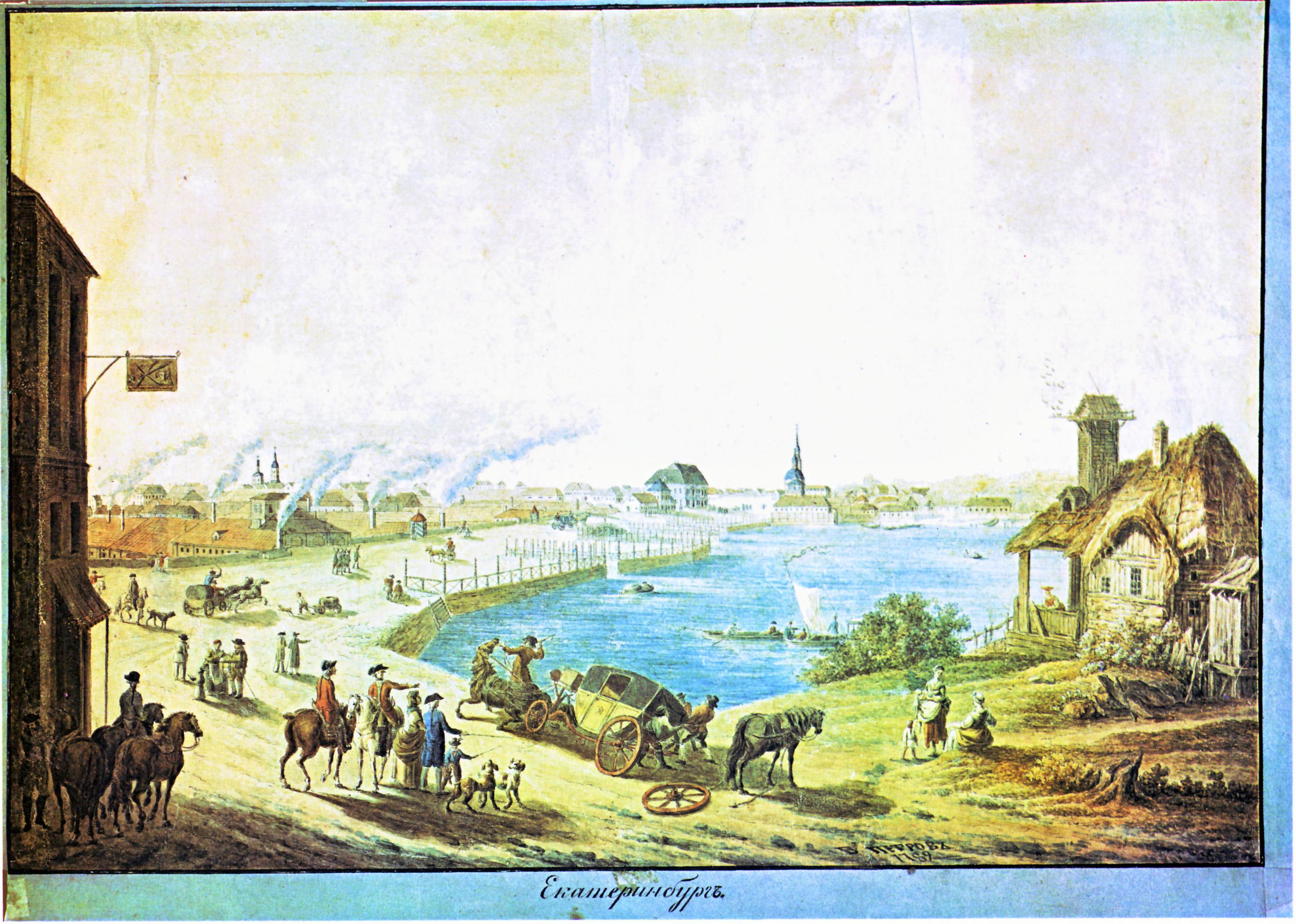Sibirsky Trakt on:
[Wikipedia]
[Google]
[Amazon]
 The Siberian Route (russian: Сибирский тракт; ''Sibirsky trakt''), also known as the Moscow Highway (, Московский тракт) and Great Highway (, Большой тракт), was a historic route that connected
The Siberian Route (russian: Сибирский тракт; ''Sibirsky trakt''), also known as the Moscow Highway (, Московский тракт) and Great Highway (, Большой тракт), was a historic route that connected

 The Siberian Route (russian: Сибирский тракт; ''Sibirsky trakt''), also known as the Moscow Highway (, Московский тракт) and Great Highway (, Большой тракт), was a historic route that connected
The Siberian Route (russian: Сибирский тракт; ''Sibirsky trakt''), also known as the Moscow Highway (, Московский тракт) and Great Highway (, Большой тракт), was a historic route that connected European Russia
European Russia (russian: Европейская Россия, russian: европейская часть России, label=none) is the western and most populated part of Russia. It is geographically situated in Europe, as opposed to the cou ...
to Siberia and China
China, officially the People's Republic of China (PRC), is a country in East Asia. It is the world's most populous country, with a population exceeding 1.4 billion, slightly ahead of India. China spans the equivalent of five time zones and ...
.
History
The construction of the road was decreed by the Tsar and was not finished until the mid-19th century. Previously, Siberian transport had been mostly by river via Siberian River Routes. The first Russian settlers arrived in Siberia by the Cherdyn river route which was superseded by the Babinov overland route in the late 1590s. The town ofVerkhoturye
Verkhoturye (russian: Верхоту́рье) is a historical town and the administrative center of Verkhotursky District of Sverdlovsk Oblast, Russia, located in the middle Ural Mountains on the left bank of the Tura River north of Yekaterinb ...
in the Urals was the most eastern point of the Babinov Road.
The much longer Siberian route started in Moscow as the Vladimir Highway
The Vladimir Highway (Russian: Влади́мирский тракт, ''Vladimirskiy trakt''), familiarly known as the ''Vladimirka'' (Влади́мирка), was a road leading east from Moscow to Vladimir and Nizhny Novgorod. Its length was a ...
and passed through Murom, Kozmodemyansk, Kazan, Perm, Kungur, Yekaterinburg, Tyumen, Tobolsk, Tara, Kainsk
Kuybyshev (russian: Ку́йбышев) is a town in Novosibirsk Oblast, Russia, located on the Om River (Irtysh's tributary), west of Novosibirsk, the administrative center of the oblast. Population: 40,000 (1970).
History
It was founded a ...
, Tomsk
Tomsk ( rus, Томск, p=tomsk, sty, Түң-тора) is a city and the administrative center of Tomsk Oblast in Russia, located on the Tom River. Population:
Founded in 1604, Tomsk is one of the oldest cities in Siberia. The city is a not ...
, Yeniseysk and Irkutsk
Irkutsk ( ; rus, Иркутск, p=ɪrˈkutsk; Buryat language, Buryat and mn, Эрхүү, ''Erhüü'', ) is the largest city and administrative center of Irkutsk Oblast, Russia. With a population of 617,473 as of the 2010 Census, Irkutsk is ...
. After crossing Lake Baikal
Lake Baikal (, russian: Oзеро Байкал, Ozero Baykal ); mn, Байгал нуур, Baigal nuur) is a rift lake in Russia. It is situated in southern Siberia, between the federal subjects of Irkutsk Oblast to the northwest and the Repu ...
the road split near Verkhneudinsk
Ulan-Ude (; bua, Улаан-Үдэ, , ; russian: Улан-Удэ, p=ʊˈlan ʊˈdɛ; mn, Улаан-Үд, , ) is the capital city of the Republic of Buryatia, Russia, located about southeast of Lake Baikal on the Uda River, Buryatia, Uda River ...
. One branch continued east to Nerchinsk while the other went south to the border post of Kyakhta where it linked to camel caravans that crossed Mongolia to a Great Wall gate at Kalgan.
In the early 19th century, the route was moved to the south. From Tyumen the road proceeded through Yalutorovsk
Yalutorovsk (russian: Ялу́торовск) is a town in Tyumen Oblast, Russia, located on the Tobol River southeast of Tyumen. Population:
History
It was founded in 1659 as the settlement of Yalutorovsky () and was granted town status in 17 ...
, Ishim
Ishim may refer to:
*Ishim (river), a river in Kazakhstan and Russia
*Ishim, Tyumen Oblast, a town in Tyumen Oblast, Russia
*Ishim (angel), a rank of angels in the Jewish angelic hierarchy
See also
*Ishimsky (disambiguation)
*Ishimbay
Ishimbay ...
, Omsk
Omsk (; rus, Омск, p=omsk) is the administrative center and largest city of Omsk Oblast, Russia. It is situated in southwestern Siberia, and has a population of over 1.1 million. Omsk is the third largest city in Siberia after Novosibirsk ...
, Tomsk
Tomsk ( rus, Томск, p=tomsk, sty, Түң-тора) is a city and the administrative center of Tomsk Oblast in Russia, located on the Tom River. Population:
Founded in 1604, Tomsk is one of the oldest cities in Siberia. The city is a not ...
, Achinsk and Krasnoyarsk before rejoining the older route at Irkutsk. It remained a vital artery connecting Siberia with Moscow and Europe until the last decades of the 19th century, when it was superseded by the Trans-Siberian Railway and Amur Cart Road. The automobile equivalent is the Trans-Siberian Highway.

Etymology and legacy of name
The Siberian Route was also known as the Tea Road, owing to the great quantities of tea that were transported from China to Europe through Siberia. Charles Wenyon, who passed by the "Great Post Road" in 1893, subscribed to the popular belief that "the best tea produced in China goes to Russia". In 1915, China exported to Siberia 70,297 tons of tea, which accounted for 65% of the country's overall tea exports. The route is the namesake of theRussian Caravan Russian Caravan is a blend of oolong, keemun, and lapsang souchong teas. It is described as an aromatic and full-bodied tea with a sweet, malty, and smoky taste. Some varieties do not include lapsang souchong, and thus have a less smoky flavor, wh ...
blend of tea.
It was imported primarily in the form of hefty hard-packed tea bricks which allowed each camel to carry large quantities in a more compact manner and could also pass for units of currency. From Kyakhta, tea was transported to the Irbit fair {{Unreferenced, date=March 2009
The Irbit fair (Russian: Ирби́тская я́рмарка, ''irbitskaya yarmarka'') was the second largest fair in Imperial Russia after the Makariev Fair. It was held annually in winter, trading with tea and f ...
for further commercial transactions. Another popular Chinese import item was dried rhubarb
Rhubarb is the fleshy, edible stalks ( petioles) of species and hybrids (culinary rhubarb) of ''Rheum'' in the family Polygonaceae, which are cooked and used for food. The whole plant – a herbaceous perennial growing from short, thick rhizo ...
root, which was sold west of St. Petersburg "for fifteen times what it cost in Kyakhta".
See also
*Tea in Russia
Tea is an important part of Russian culture. Due in part to Russia's cold northern climate, it is today considered the ''de facto'' national beverage, one of the most popular beverages in the country, and is closely associated with traditional Russ ...
* Kyakhta Russian-Chinese Pidgin
Kyakhta (russian: Кя́хта, ; bua, Хяагта, Khiaagta, ; mn, Хиагт, Hiagt, ) is a town and the administrative center of Kyakhtinsky District in the Republic of Buryatia, Russia, located on the Kyakhta River near the Mongolia–Russia ...
References
Further reading
* Avery, Martha. ''The Tea Road: China and Russia Meet Across the Steppe''. Mandarin Books, 2003. . * Alexander Michie, 'The Siberian Overland Route from Peking to Petersburg', 1864. -followed the route in 1863 {{Trade route 2 Roads in Russia Roads in Siberia History of Siberia Economic history of Russia Russian Empire 1689 establishments in Russia China–Russian Empire relations Historical roads